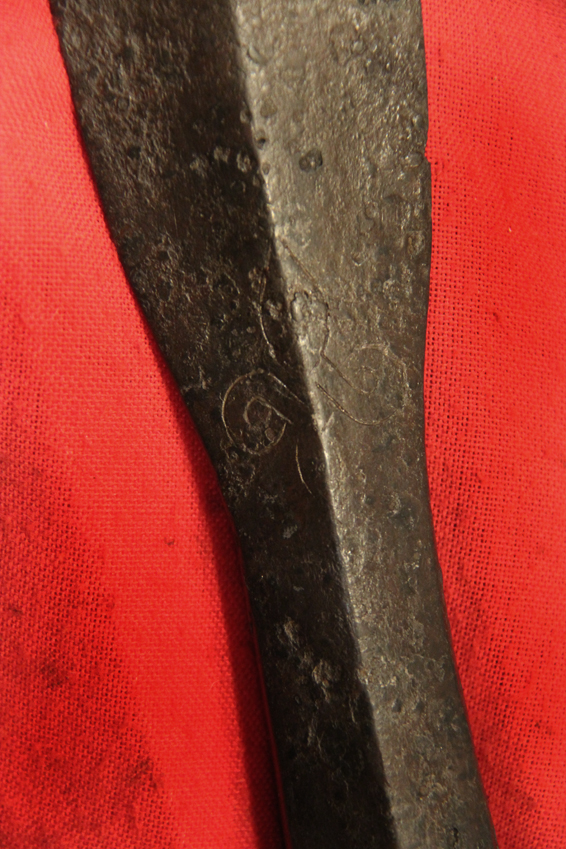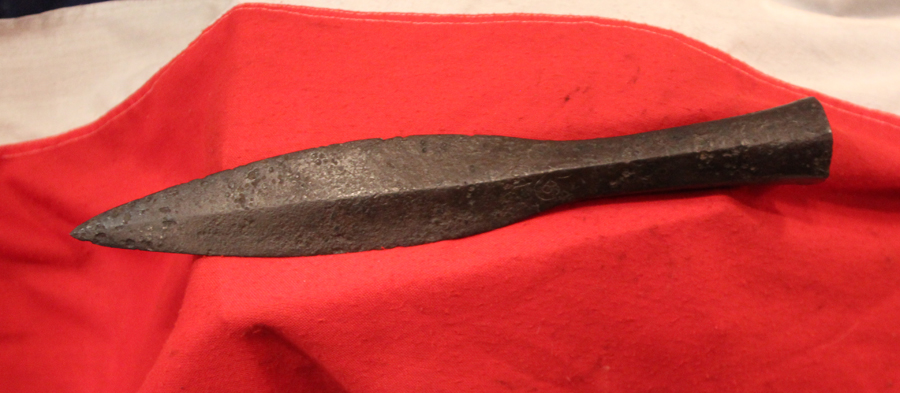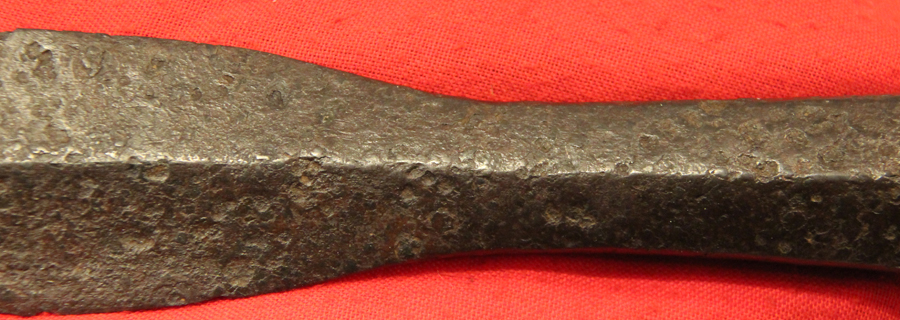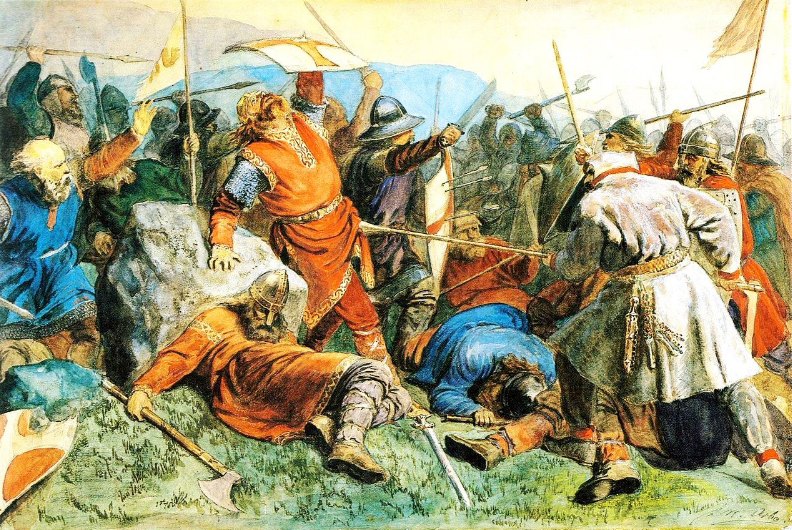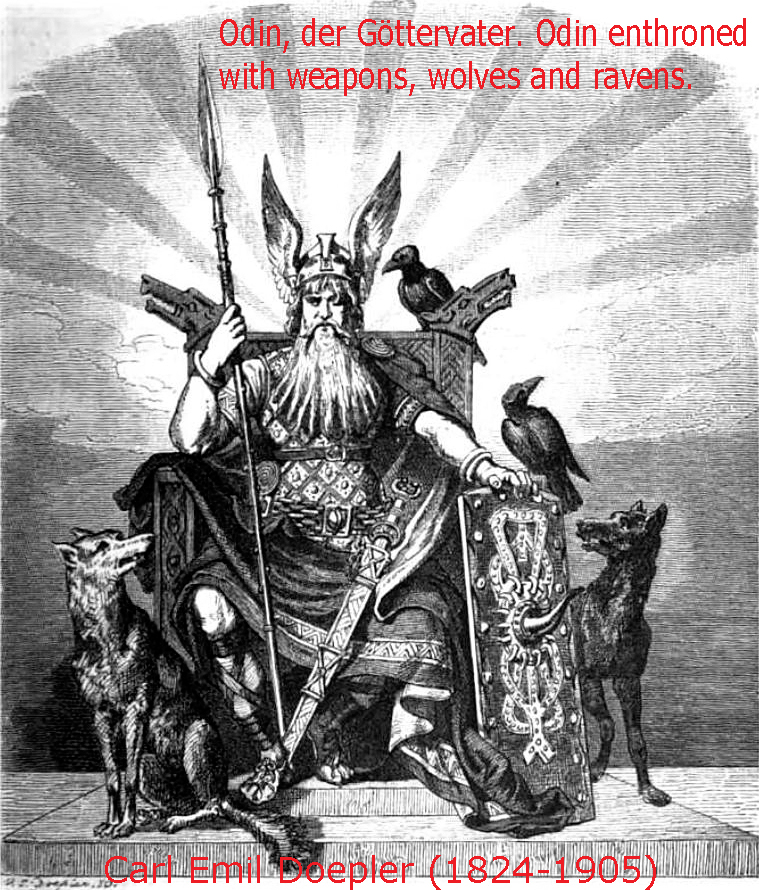An Incredible 1100 Year Old, Viking, Great Hewing Spear, a Hggspjt, A Viking Museum Piece. With Extremely Rare Norse 'Knotwork' Runic Engraving Still Present. A Powerful Spear of Incredible Heft
Made over 1000 years ago, and probably modelled on Odin's 'Great Hewing Spear' itself.
It is so rare to find an original Hggspjt Viking great spear, the spear of a Viking chief or his personal guard, with its original Norse knotwork engraving, and it is simply incredible to see it still clearly visible after more than a thousand years.
An original Hggspjt large head spear of a Viking Norse clan chief with superb Norse incised knotwork, as one might see on the legendary Gungnir, the Spear of Odin itself. {Old Norse, Gungnir }
Larger-headed spears were called Hggspjt, (great hewing spear), from Old Norse higg, "stroke, blow, slaughter, beheading", and could also be used for cutting. A two-handed grip on the spear shaft gives the Viking spear more power and usability than a one-hand grip. Both ends and the shaft of a Viking spear could be used to hit an opponent, block attacks with weapons, and even trip opponents. By shifting the hand hold on a spear shaft, the ends can be used to hit an opponent at short range and long range. With a sliding grip, a spear can be thrust forward in such a way that both hands end up at the butt end of the shaft, which allows the spear to reach the full extent of the shaft in a thrust. As you'd expect for the weapon of a god, Gungnir is no ordinary spear. It was created by the dwarves, the most skilled smiths in the cosmos, as is related in the tale of how the gods greatest treasures were made.
Gungnir is said to have runes carved on its point, which presumably increase its aim and deadliness through magic. Archaeology confirms that the Norse and other Germanic peoples did in fact carve runes into some of their spears; perhaps this was done in imitation of the mythical model of Gungnir. Other aspects of Gungnir definitely did serve as mythical models for human actions. This is especially true with regard to the spears role in human sacrifices offered to Odin.
In the war between the two tribes of gods, Odin led the Aesir gods into battle against the Vanir. He began the battle by hurling his spear over the enemy host and crying,
"INN YR ALLA !"
(Odin owns all of you!).
The historical Norse themselves, when about to begin combat, repeated this paradigmatic gesture of Odins, thus giving the opposing army as a gift to Odin, in hopes that the god would return the favour by granting them victory.
In the Viking Age, Odin was the chief of the gods, a role which in earlier times he had shared with the god Tyr. Just as Tyr's sword seems to have been a symbol of the power and authority of lordship (we can infer this from the number of Indo-European parallels), so Odin's spear probably was as well. Gungnir, the finest spear in the cosmos, and it would have served as a compelling image of the ferocious might, both magical and military, of the grim ruler of the gods.
In regards to surviving iron artefacts of the past two millennia, if Western ancient edged weapons were either lost, discarded or buried in the ground, and if the ground soil were made up of the right chemical composition, then some may survive exceptionally well, just as did this one, and if well conserved it can be a remarkable item of antiquity looking much as it did before it was lost millennia ago.
Former property of an English gentleman's collection, acquired in the 1940's.
13.5 inches long and over one and a half pounds in weight {340mm and 700 grams}.
Almost every iron weapon that has survived today from this era, is now in a fully, or partially, russetted condition, as is this one, and most similar to those like it that have been preserved in national or Royal collections today .
Every single item from The Lanes Armoury is accompanied by our unique Certificate of Authenticity. Part of our continued dedication to maintain the standards forged by us over the past 100 years of our family’s trading
Code: 21880
3750.00 GBP


